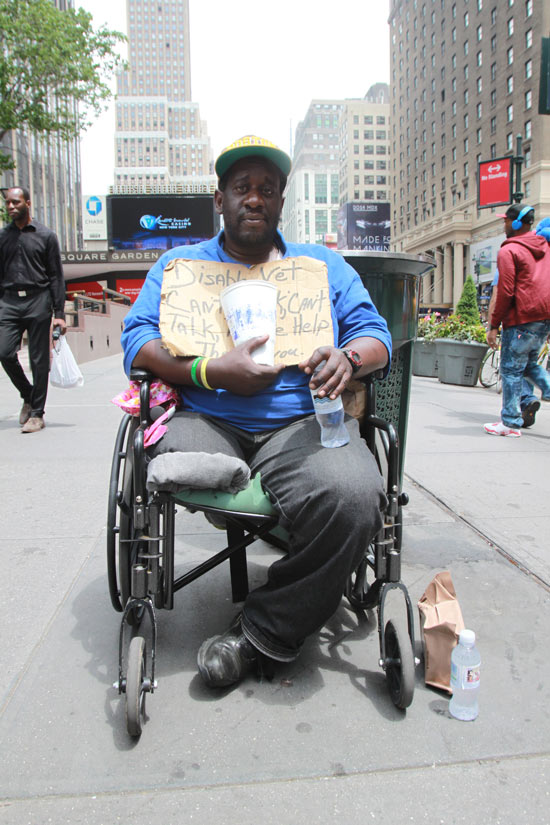By Sebastian Zotoff
Army Staff Sergeant Kelli Kerber first deployed to Iraq in 2007, leaving behind her three children, their goodbyes said at their grandmother’s house in Slidell, Louisiana.
Kerber’s two youngest children were too young to realize what it meant for their mother to be deployed. Gabrielle, her oldest child, in some context, did understand.
“She thought that I had chosen to leave them, she wouldn’t speak to me, she was very sullen, and just angry,” Kerber said.
Today, with the faint memory of those days, Gabrielle, now 15, says, “I just didn’t realize why she had the go.”

Army Staff Sergeant Kelli Kerber, her husband, Army Staff Sergeant Christopher Kerber and her three children (from left to right) Gabrielle, Layla and Troy celebrate their mother and stepfather’s return from Iraq.
Kerber, 36, is one of more than 280,000 female veterans who have since returned home from the wars in Iraq and Afghanistan, about 12 percent of whom were single mothers while serving in the military.
For Kerber, that meant leaving her children with their grandmother so she could serve as an X-Ray technician in the MEDCOM unit in Baghdad.
“The third day I was there was the first time we had traumatic amputations” she said vividly recounting what she saw. When the medical evacuation call came through, Kerber started to prepare herself, adding, “The mental part is what kills you.”
In one particular incident in February 2007, Kerber described an explosion in which “a female suicide bomber had gone to a playground where kids were playing soccer and detonated herself – so our hospital was full of kids.”
The children, “with this tremendous look of confusion,” were about the same age as her own, she said.
In late 2012, Kerber was deployed a second time – to the American Embassy in Baghdad. “The second time it wasn’t nearly as bad as when I deployed the first time” Kerber said.
It’s been four months since she returned from her second tour in Iraq and for the first time, she and her children are living far from a military base in a Surprise, Ariz. suburban home. Her children Gabby, Layla and Troy are now 15, 13 and 11 years old.
Kerber originally joined the Army reserves to pay for a college education but transferred to active-duty following Hurricane Katrina. “The day it [Hurricane Katrina} hit, August 29th, 2005 was Gabrielle’s birthday,” Kerber said.
After five days of living with friends in Georgia, Kerber and her three children returned home to find a tree torn out of the ground and laying through the walls of her home.
“What wasn’t damaged by water, was damaged by mildew and mold and it just had horrible stench – so it wasn’t livable at that point. I know they were going to repair it but I had these three little kids looking at me with five days worth of clothes – and that was all that we had,” she said.
“We lost everything [in Katrina], “ she said with her southern twang. Her mother’s house was flooded and their house destroyed.
The only option the Army reserve soldier and single mother saw as a solution was to enlist in active-duty, even with a high likelihood of deployment.
Kerber already was separated from the children’s father, but both were deployed to Iraq.
“You know, you have expectations of what home is going to be like when you return, but that’s where you fail,” she says.
When Kerber first came home, she described how detached she felt from her children: “I remember going to the grocery store and thinking; I don’t even know these kids. I knew them as babies.”
According to experts and doctors, the longer the parent is apart from their child, the more problems the child is likely to experience. In a study conducted by the National Institute of Health, three-fourths of veteran families have reported problems in the home – such as children acting afraid of their parents or having difficulty expressing affection.
Kerber calls her kids strong and resilient for going through what they went through, “Things that would be a catastrophe to most kids – [Kerber’s children] think whatever.”
Kerber is now married to another veteran of the Iraq war, Staff Sgt. Chris Kerber, an Army recruiter.
She says she has worked through the stresses and images of a war hospital, where she helped save Iraqi children and fellow soldiers’ lives. Kerber now is attending Arizona State University, working toward another college degree.
But she can still rattle off the name of the first American soldier she saw die in the hospital.
“His name was James Ellis, he was 24-years-old and he was from Valdosta, Georgia,” she said.
She also saw a fellow service woman die, a nurse who worked with her in the hospital. The woman was crossing the street to go to the gym when a barrage of rockets struck the area around the hospital. Soon to be married, she died in the trauma room.
“My heart just sank,” Kerber said.


